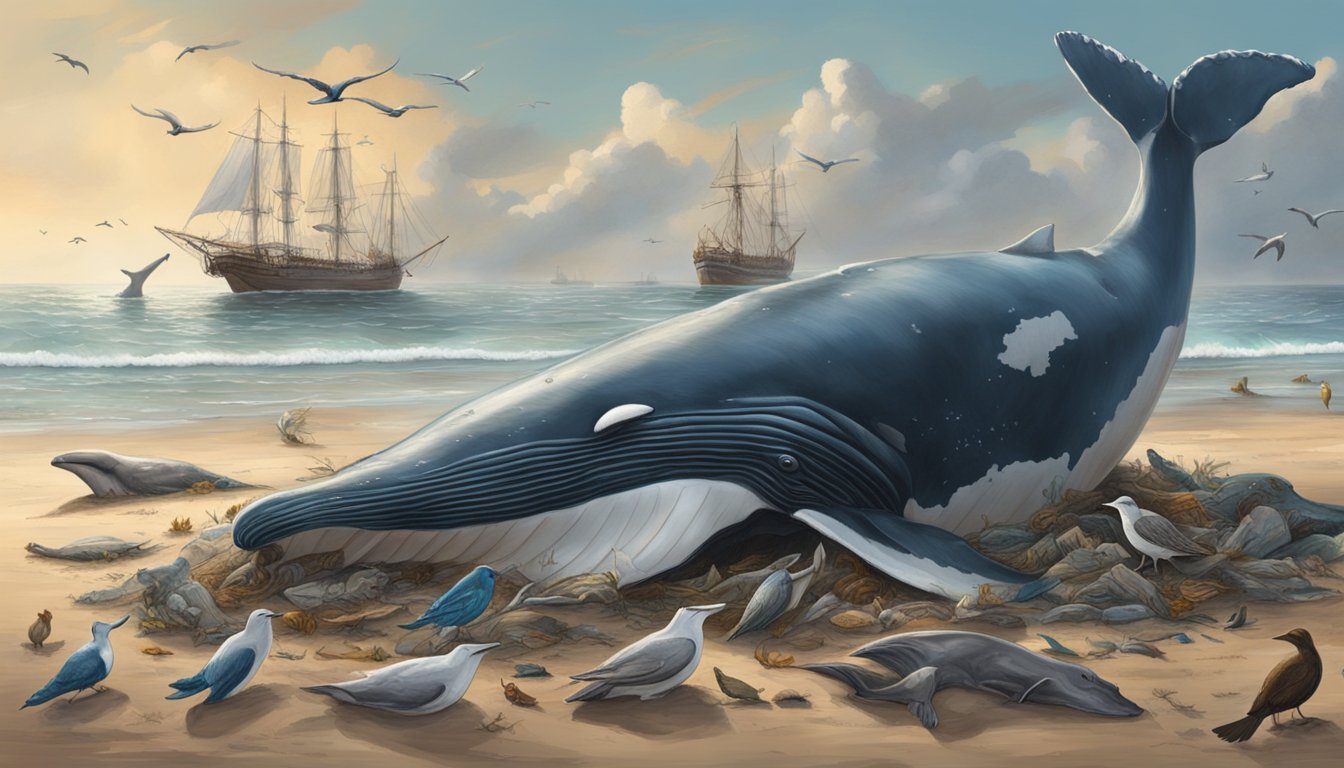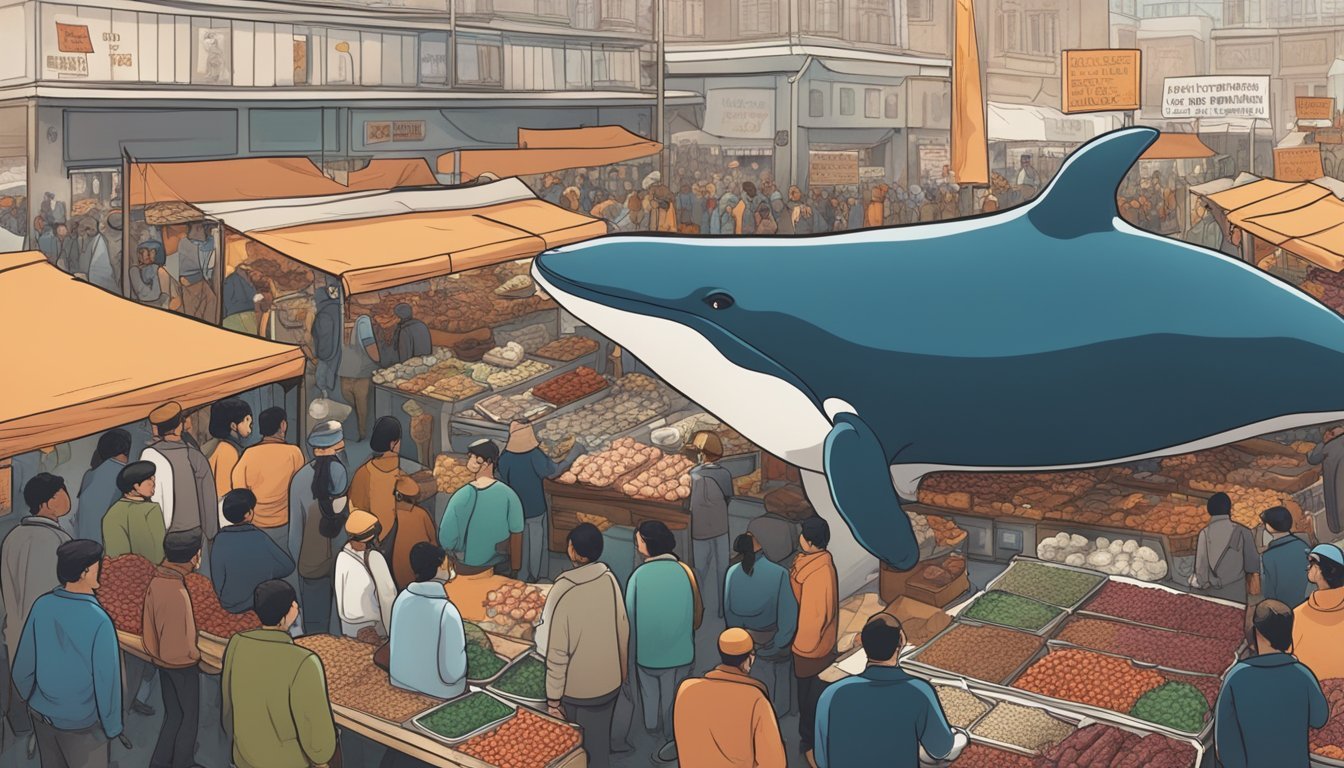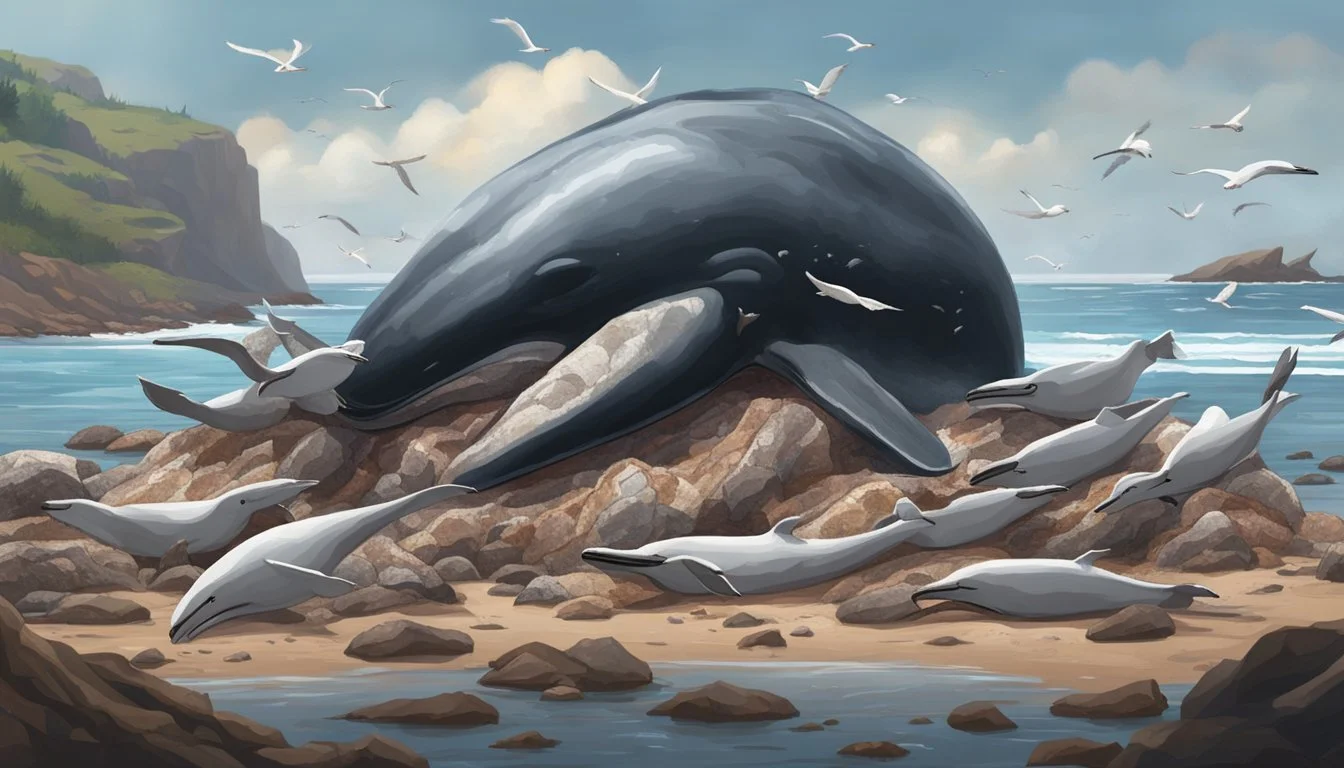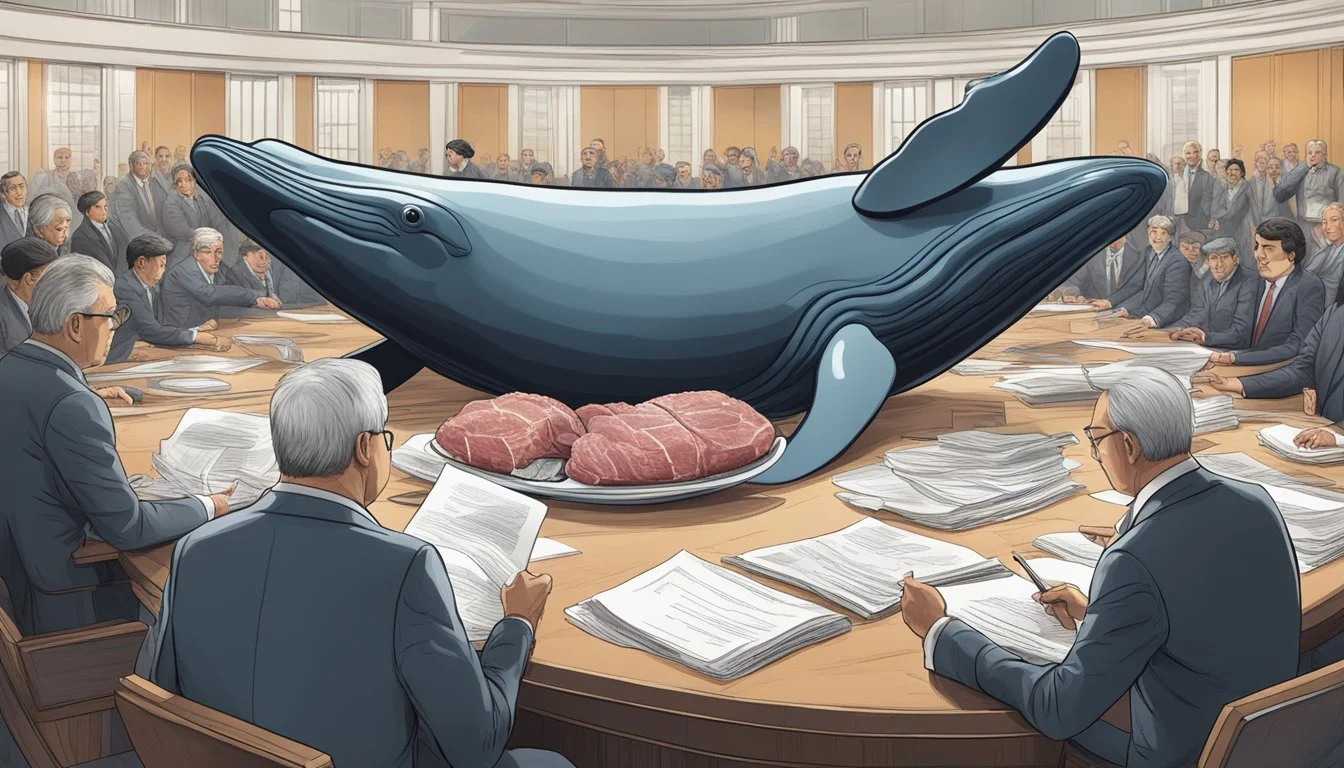Whale Meat Consumption
Understanding the Ethical and Environmental Debate
In recent years, the consumption of whale meat has become one of the most polarizing issues in the global conversation on wildlife conservation and culinary traditions. At the heart of the dispute is a clash between cultural practices and emerging environmental ethics. In some regions, like Japan, whale meat has historical significance and remains a niche food, yet internationally, the hunting of whales is widely condemned due to the conservation status of many whale species and ethical concerns regarding animal rights.
The rekindling of this controversy can be traced to initiatives such as the installation of whale meat vending machines in Japan, aimed at reviving the waning consumption among the public. This has sparked a resurgence of debate around the practice of whaling and the ethical implications of consuming whale meat. Despite the sharp decline in whale meat consumption compared to its peak in the post-war period, when it was a significant source of protein, the practice of whaling endures in certain cultures, underpinning a debate that weighs conservation against tradition.
Regardless of the position one takes on the issue, the controversy over whale meat consumption is intrinsically linked to broader topics of biodiversity conservation, sustainable practices, and respect for cultural dietary preferences. As such, it poses a challenge for global governance and necessitates a nuanced understanding of the diverse perspectives involved.
Historical Context of Whale Meat Consumption
Whale meat consumption has varied greatly across different cultures and historical periods. This section explores the cultural and practical evolution of whaling, shedding light on its significance and the transformative practices over time.
Cultural Significance of Whaling
Whaling holds a significant place in many cultures around the world. In Japanese culture, particularly during the Edo period, whale meat was an important source of protein and became woven into the societal fabric. Whaling was not merely an economic activity but also carried religious connotations. Japanese rituals included praying for whalers' safety and honoring the spirits of the whales. The act of consuming whale meat in Japan transcended sustenance, symbolizing gratitude and respect for the sea giants they relied on.
Evolution of Whaling Practices
Whaling practices have evolved with technological, ecological, and social changes. Initially, indigenous societies hunted whales using simple tools and canoes. With time, European and American whalers developed sophisticated ships and harpoon technology, drastically increasing their reach and efficiency. In America, whalers utilized various parts of whales primarily for oil, with whale meat consumption being a less frequent occurrence. However, it is noteworthy that whale meat was consumed at times; for example, 19th-century American whalers sometimes ate "doughnuts" — hard bread dipped in boiling whale oil. As industrialization progressed, the demand for whale oil diminished, leading to a decline in whaling. However, the disappearance of whale populations eventually led to international efforts to regulate and reduce whaling to protect these majestic creatures.
Whaling Regulations and the International Framework
The regulatory landscape governing whaling activities operates within a framework established by international agreements, significantly shaped by the International Whaling Commission (IWC), and is further defined by national legislations.
The Role of International Whaling Commission (IWC)
The IWC was set up under the International Convention for the Regulation of Whaling (ICRW) in 1946, with the purpose of conserving whale populations and overseeing the development of the whaling industry. It comprises member countries that collectively decide on regulations related to whale conservation, including the issuance of catch limits and sanctuaries. A critical measure enacted by the IWC is the commercial whaling moratorium of 1982, which came into effect in 1985 and remains in force. While this moratorium has played a significant role in curtailing commercial whaling, it has exemptions that allow for whaling under specific conditions such as scientific research or aboriginal subsistence.
National Legislations and Whaling Policies
National governments of IWC member countries incorporate the Commission's regulations into their domestic laws, but approaches and compliance vary. Some countries have formulated stricter whaling policies that go beyond IWC's recommendations, while others have sought to challenge or operate in the margins of IWC rulings. Japan, for example, has been a party of the IWC and, despite the moratorium, has conducted whaling under provisions for scientific purposes, although this practice has faced widespread international criticism. Furthermore, national regulations may be influenced by other international treaties such as the Convention on International Trade in Endangered Species of Wild Fauna and Flora (CITES), which can impose further restrictions on whaling and the trade of whale products.
Scientific Research and Whaling
Scientific research has been cited by some nations as a rationale for continuing whaling practices, leading to a complex debate touching on the conservation, ethics, and scientific validity of such activities.
Scientific Whaling: Methods and Justifications
Countries conducting scientific whaling, notably the Japanese government, use various methods to study whale populations. Under the guise of scientific research, these nations dispatch fleets to conduct lethal sampling, which involves harvesting whales to collect data on age, health, and diet composition. This practice is legally permitted by the International Whaling Commission (IWC) as an exemption to the 1986 moratorium on commercial whaling, provided the research contributes to better management and conservation of whale species.
Justifications for scientific whaling include:
Assessing population structures and dynamics
Understanding feeding patterns and migration routes
Studying the impacts of environmental changes on whale species
Critics argue that non-lethal research techniques, such as photographic identification and biopsy sampling, can provide similar data without the need to kill whales. Furthermore, the sale of whale meat from these expeditions has been a point of contention, with allegations that scientific whaling is a cover for commercial purposes.
Contribution to Marine Biology Research
The contribution of scientific whaling to marine biology research has been a subject of much debate. Supporters assert that the data collected are essential for informed management of whale stocks and for understanding the role of whales in marine ecosystems. Discussions focus on the high seas and areas like the Southern Ocean, where research can shed light on globally significant ecological processes.
Major contributions cited include:
Detailed information on the age, health, and diet of whales
Data on the impact of environmental changes on various species
Insights into the life cycles and reproductive rates of whales
However, there are contrasting views regarding the necessity and ethical implications of lethal sampling methods. Critics often question the scientific value of the research, pointing to high costs and low demand for whale meat as indicators of the waning significance of whaling to contemporary society. They advocate for alternative research methods that do not involve the killing of these sea giants.
The Whaling Industry and Economical Aspects
The viability and economic ramifications of the whaling industry continue to be debated, particularly in nations such as Japan where commercial whaling and the consumption of whale products play a role in local economies.
Commercial Whaling and the Global Market
Commercial whaling activities have significant implications for the global market. In particular, Japan resumed commercial whaling in 2019 after withdrawing from the International Whaling Commission (IWC). However, Japan's Fisheries Agency has established quotas to limit the number of whales harvested annually. For instance, the catch cap for a recent year included 52 minke whales, 150 Bryde's whales, and 25 sei whales. The harvest yields whale products such as meat, which is sold in markets in cities like Tokyo and Yokohama.
The industry is sustained in part by government subsidies, which are a topic of contention both domestically and internationally. The whaling company, Kyodo Senpaku, operates Japan's main whaling fleet and has been central to the country's pursuit of these commercial activities.
Economic Impact on Local Communities
The economic impact of whaling on local communities is multifaceted. For coastal towns, whaling can be a source of employment and cultural identity. Whale meat, once a critical post-war food resource in Japan, has seen a decline in widespread consumption yet remains a niche market that supports local fishermen and associated businesses.
Despite international scrutiny and environmental concerns, some proponents argue that whaling is a use of natural resources that can be conducted sustainably. Critics, however, point to the subsidies as an indication that the industry may not be economically viable without government support.
Communities involved in whaling often depend on the industry's infrastructure, from processing facilities to the broader network of distribution, which channels resources into the local economy. The economic impact can vary, with some arguing that the cultural value of whaling adds an intangible benefit beyond mere financial figures.
Whale Meat in Modern Diets and Cuisine
Whale meat, although not a prevalent dietary element globally, still holds a place in the cuisines of certain cultures. Its role varies from a traditional delicacy to a contentious subject due to conservation and ethical concerns.
Culinary Practices Involving Whale Meat
Raw Consumption: In some regions, notably Japan, whale meat is consumed raw as sashimi, a preparation commonly associated with seafood and it is often served in slices.
Cooked Dishes: Whale meat is also prepared fried or grilled, providing a texture and taste that some compare to a mix between beef and chicken. The meat can be featured in various dishes, served in restaurants, and has historically been included in items such as school lunches in Japan.
Cured Forms: A cured form of whale meat resembling bacon is another culinary use, creating a product with a smoky umami flavor.
Whale Meat Distribution Channels
Restaurants: Certain restaurants specialize in whale dishes, providing a range of preparations from the raw to the cooked.
Markets and Vending Machines: In places like Japan, whale meat can be found in fish markets and has been sold in vending machines, though its prevalence has reduced over time.
International Trade: The distribution of whale meat faces significant restrictions due to international regulations, limiting its availability mostly to local catch and consumption in countries that continue the practice of whaling.
Environmental and Conservation Perspectives
This section examines the effects of whaling on whale populations and the measures undertaken to ensure their conservation and sustainability.
Impact of Whaling on Whale Populations
Whaling has historically had a significant impact on whale populations around the world. Many species have been driven to the brink of endangerment due to overharvesting. Conservationists argue that the depletion of these giants of the sea can have cascading effects on marine ecosystems, as they play a critical role in maintaining ecological balance.
Blue whale: Once abundant, now listed as endangered
Humpback whale: Conservation efforts have helped populations recover
Right whale: Still facing severe threats, listed as endangered
The environmental impact of reducing whale populations extends beyond the loss of biodiversity. Whales contribute to carbon sequestration; their decline can impede this natural process, exacerbating climate change.
Efforts Towards Conservation and Sustainable Practices
In response to the endangerment of many whale species, international initiatives and agreements, such as the International Whaling Commission (IWC), have been established to regulate whaling activities and promote sustainable practices. These regulatory bodies aim to ensure that whaling, if it occurs, is conducted without threatening the survival of whale populations.
The IWC's Moratorium: Enacted in 1986 to halt commercial whaling
Whale Sanctuaries: Created to provide safe havens for whales to recover
Conservation groups, alongside the IWC, have also focused on the protection of habitats and mitigating other threats like bycatch and ship collisions. Whale and dolphin conservation is paramount, enforcing stricter measures to curb illegal whaling and promote non-lethal uses of whales such as eco-tourism, which benefits both the animals and local communities. By supporting these conservation efforts, various stakeholders aim to achieve a balance between utilization and the preservation of marine life.
Public Perception and Societal Impact
In examining the nuances of whale meat consumption, one observes shifting dynamics shaped by consumer preferences and societal values. This section will delve into the intricacies of consumer demand and the profound impact of activism on public sentiment regarding this controversial practice.
Consumer Demand and Changing Trends
Whale meat consumption, once a necessity and later a cultural preference in certain societies, has seen a notable global decline. Statistical evidence from Japan indicates a drop in the population's approval and consumption of whale meat, with only 33% of individuals in support of the practice and a higher percentage expressing disapproval or ambivalence. In Iceland, where whale hunting has been a part of national tradition, a striking 84% of the population reported never buying whale meat, showcasing a significant downturn in consumer demand among residents.
Japan: 33% support whale meat consumption
Iceland: 84% never purchase whale meat
This trend is also reflected in commercial markets where, despite cultural histories of cetacean consumption, the demand has lessened to the point where the market for whale meat has become minimal, both domestically and internationally.
Roles of Activism and Public Criticism
Activism and public criticism have been pivotal in reshaping the narrative around whale meat consumption. Environmental groups and animal rights campaigners have consistently highlighted the ethical implications and potential health risks associated with the consumption of cetaceans. Their efforts have led to resolutions by organizations such as the International Whaling Commission to scrutinize the health impacts more closely, revealing a strong influence on public policy and consumer attitudes.
The interplay between cultural heritage and activism is evident in societies like Japan, where whale meat is intertwined with historical practices and religious observances. Despite this, activists persist in their campaigns, often drawing international support that amplifies public criticism and pressures governments to reconsider whaling policies.
Activist impact: Increased resolutions on health risks
Cultural tension: Whaling traditions vs. global activism
The societal impact of such activism is clear, as public opinion is swayed and consumer trends shift away from acceptance of whale meat, underscoring the role of advocacy in driving change.
Health and Nutritional Aspects of Whale Meat
Whale meat has historically been a significant food source in various cultures, offering protein and other nutrients, although modern consumption is subject to health scrutiny and dietary recommendations.
Whale Meat as a Source of Nutrition
Whale meat is high in protein and contains various nutrients essential for human health. It is a dense source of iron, which is vital for forming hemoglobin that transports oxygen in the blood. Additionally, whale meat provides fats, some of which can be omega-3 fatty acids that are beneficial for heart health. However, the nutritional profile can vary considerably based on the species of whale and the part of the body consumed.
Nutritional Breakdown Table
Protein: High – exact amount varies
Iron: Rich source
Fat Content: Varies; includes omega-3 fatty acids
Calories: Depends on fat content
Health Considerations and Recommendations
Consuming whale meat poses several health considerations. The meat may contain high levels of toxic substances like PCBs (polychlorinated biphenyls) which can lead to nerve damage, reproductive and developmental disorders, immune system suppression, and liver damage. Mercury levels in whale products can be detrimentally high, warranting caution as mercury exposure is linked with neurological problems.
Dietary Recommendations
Children, and pregnant or breastfeeding women are especially advised to limit intake due to the vulnerability to contaminants found in whale meat.
Older people may need to be careful with whale meat consumption, due to the potential accumulation of contaminants over time and an increased risk of chronic health conditions.
Health authorities in some regions recommend that if whale meat is to be consumed, it should be in moderation, factoring in the source and potential contamination levels.
By being aware of both the nutritional value and the health risks, consumers can make more informed choices about including whale meat in their diets.
Legal Aspects and International Disputes
The consumption of whale meat is ensnared in a complex web of legal frameworks and international disputes. These controversies stem from differing national practices and interpretations of international law, leading to intense legal battles and a division among nations regarding the whaling industry.
Contentious Legal Battles
Several countries, including Japan, Iceland, and Norway, have found themselves at odds with international regulations over their whaling practices. Notably, on March 31, 2014, the International Court of Justice (ICJ) ruled against Japan's whaling program in the Antarctic, determining it was not for scientific research as claimed. This landmark case initiated by Australia underscored the contentious legal battles surrounding whaling.
Table: Noteworthy Legal Actions Regarding Whaling
International Court of Justice: Action - Australia vs. Japan regarding Antarctic whaling, Outcome - Ruling against Japan, citing the program was not for scientific research
International Whaling Commission (IWC): Action - Moratorium on commercial whaling since 1985, Outcome - Ongoing, with exemptions and disput
Stance of Nations in Whale Meat Consumption Debate
Nations are polarized on the issue of whaling. Norway and Iceland openly defy the IWC's moratorium, asserting their right to manage marine resources. Conversely, Australia has been a key opponent of whaling, actively working through international legal channels to restrict it. Each country's stance is influenced by cultural traditions, economic interests, and environmental commitments.
Norway: Continues to hunt whales and challenges the IWC moratorium.
Iceland: Similar to Norway, it whales under objections to IWC regulations.
Australia: Has been at the forefront of legal challenges to Japan’s whaling practices.
The divergent views on whale meat consumption bring to light a fractioned international landscape, where legal wrangling continues to redefine the relationship between humanity and these sea giants.
Future of Whaling and Whale Meat Consumption
The future of whaling and whale meat consumption hinges on evolving industry projections and adapting consumption practices, challenging traditional norms and global perspectives.
Projections for the Whaling Industry
Despite cultural ties to whaling, Japan anticipates challenges in maintaining the industry's vitality. The demand for whale meat is a fraction of its peak, signaling a steady decline. Government data indicated that in 2021 whale meat consumption in Japan was around 1,000 tonnes, dramatically lower compared to chicken at 2.6 million tonnes and beef at 1.27 million tonnes.
The decline is not limited to Japan; other nations recognize the diminishing justifications for whaling. Iceland has announced plans to halt whaling from 2024 due to falling demands and continuous controversy, which likely indicates a similar pattern that could be observed globally. These developments suggest that significant contractions in the whaling industry are imminent.
Innovations and Adaptations in Consumption Practices
The industry's response includes innovations aimed to reignite consumer interest. Unconventional marketing techniques, such as deploying vending machines to sell whale meat, are part of an effort to boost consumption. This move represents an adaptation in marketing strategies to combat the disinterest among modern consumers.
As whaling regions grapple with international pressure and a global decline in demand, these innovative approaches, though controversial, are attempts to sustain what was once a more robust market. Despite these efforts, societal trends and international regulations present constant hurdles, complicating the trajectory of whale meat consumption for years to come.











